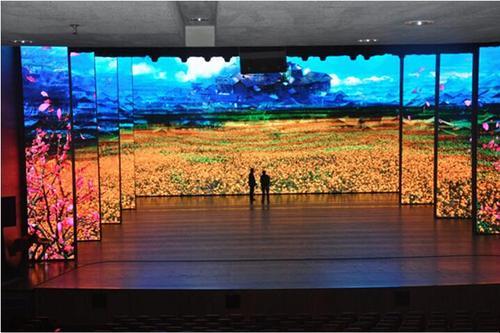
A common kind of Light Emitting Diode display wall technology is the directly viewed Light Emitting Diode. This technology utilizes individual LED units that are arranged near in proximity to form a big display. Directly viewed LED walls are recognized for their high brightness as well as lively hues, making them ideal for external events and brightly illuminated settings. These displays also have a broad sight angle, which indicating that viewers can view the display clearly at various positions. This makes directly viewed Light Emitting Diode screens a favored choice for stadiums as well as external events.
Another kind of Light Emitting Diode display screen technology is the LED-backlit LCD. This solution combines conventional LCD screens and Light Emitting Diode backlighting to enhance brightness and hue precision. LED illuminated Liquid Crystal Displays are often used in interior environments, such as shopping malls and conference rooms. These displays provide superior visual clarity and are generally more cost-effective than direct view Light Emitting Diode screens. Nonetheless, they may often perform as effectively in well-lit settings, since the backlighting can sometimes wash out the colors.
A third choice is the Organic Light Emitting Diode display screen. Organic Light Emitting Diode led video wall for corporate communication technology offers superior contrast as well as hue depth compared to other types of screens. Every dot in an Organic Light Emitting Diode screen emits its own light, enabling for true dark tones as well as lively hues. This makes OLED video walls especially attractive for applications that require premium images, such as gallery exhibitions and luxury shopping outlets. Nonetheless, Organic Light Emitting Diode technology can be more costly while may not be as bright as direct view LED walls, making it less appropriate for outdoor use.
Along with the aforementioned options, various additionally various applications for Light Emitting Diode display screens. These displays can be utilized for advertising, entertainment, as well as data presentation. For instance, companies often use LED display screens for digital signage to draw in clients and promote goods. Within entertainment, they enhance the sight encounter at concerts and gatherings, providing lively backgrounds as well as captivating visuals. In business environments, LED video screens can be used for presentations, visual meetings, as well as training sessions, aiding to communicate information through a aesthetically appealing way.
To summarize, Light Emitting Diode video screens are available in different technologies, every with its unique benefits and applications. Directly viewed LED screens are great for outdoor applications, whereas LED-backlit Liquid Crystal Displays are more appropriate for indoor settings. Organic Light Emitting Diode video walls offer superior visual clarity yet may be at a higher price. Grasping these differences can help entities to make informed choices about the best type of Light Emitting Diode display wall most satisfies their needs, whether it be for advertising, amusement, and corporate use.